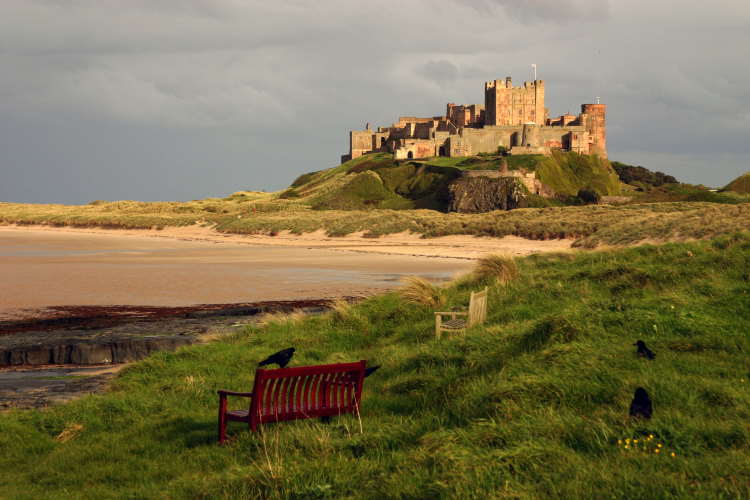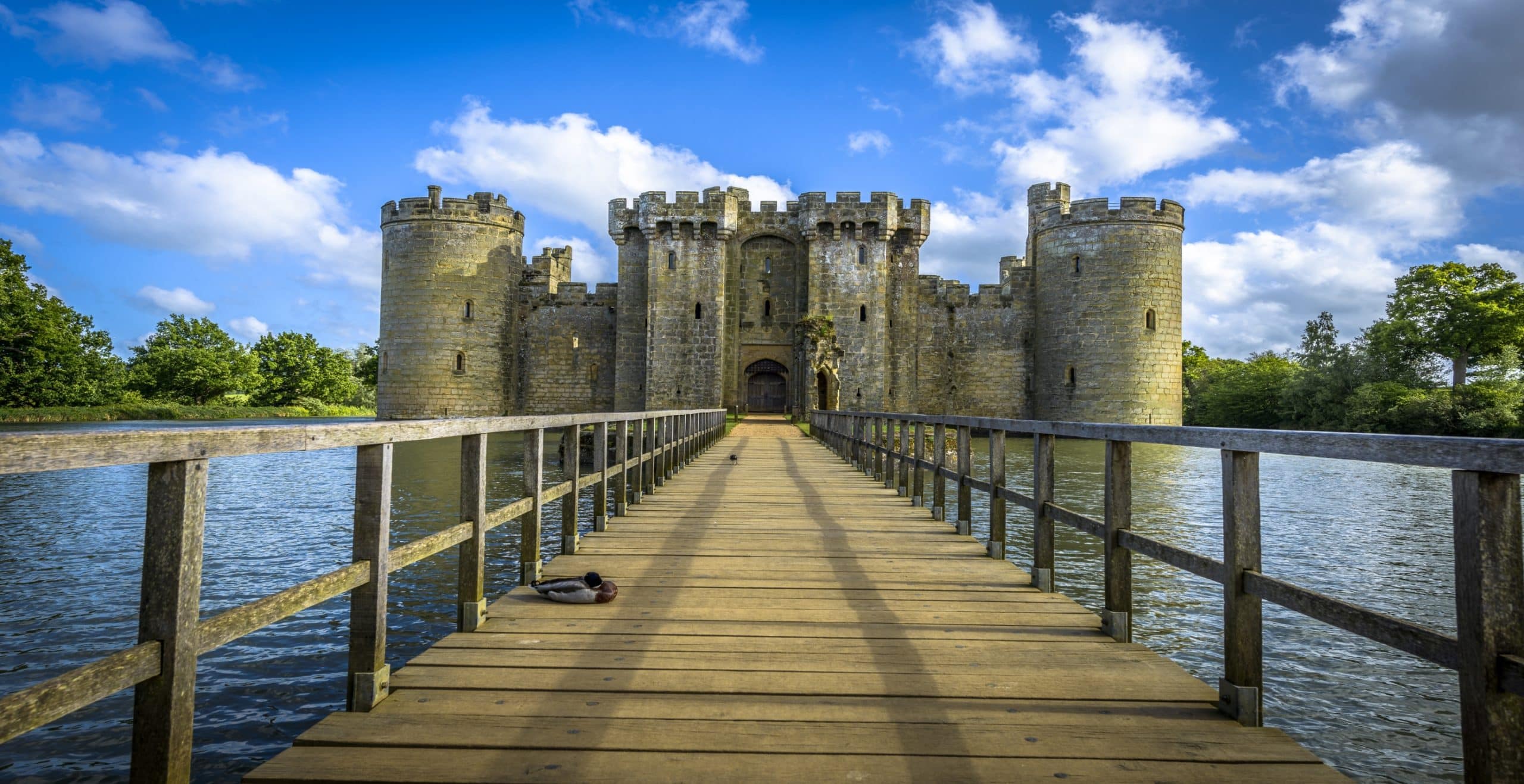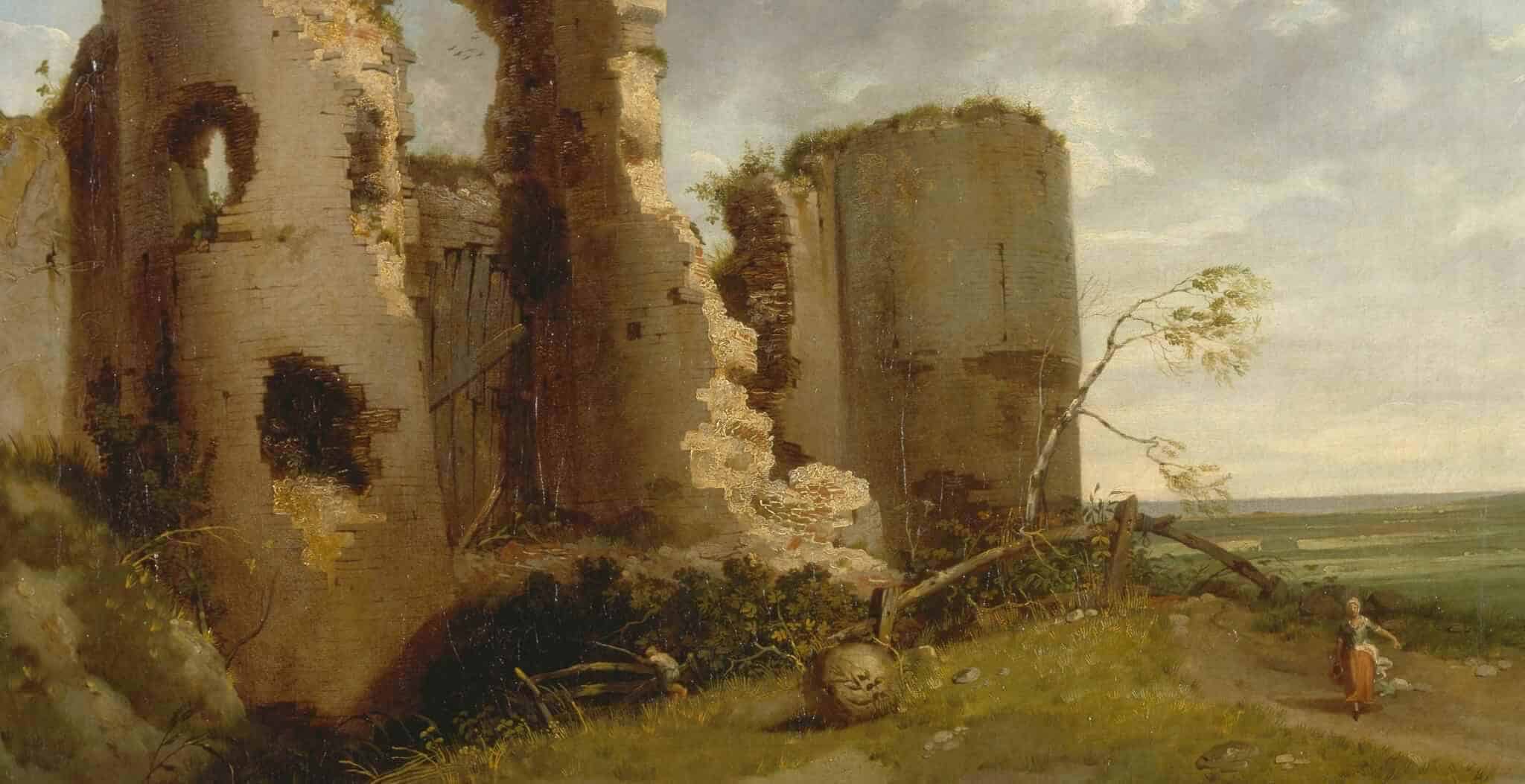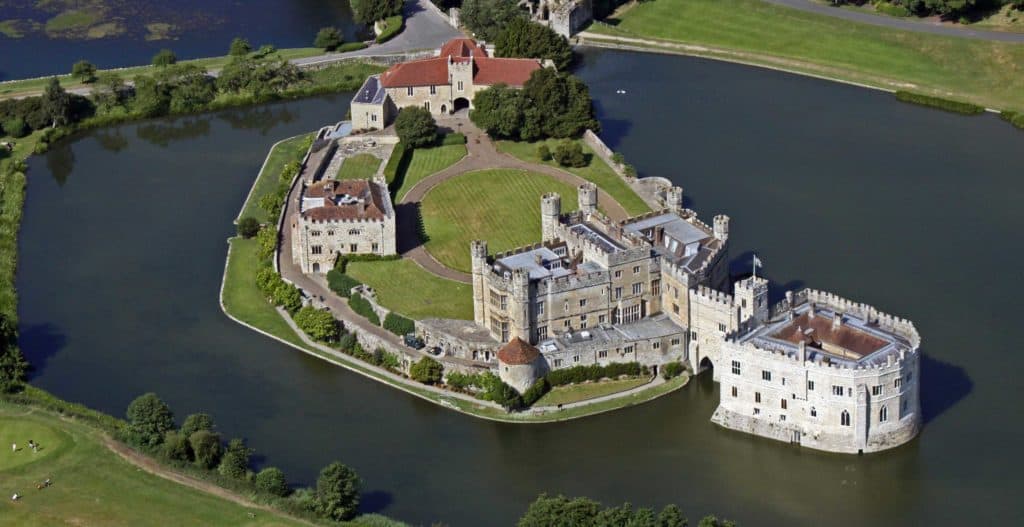Telephone: 01580 830196
Website: https://www.nationaltrust.org.uk/bodiam-castle
Owned by: National Trust.
Opening times: Open 363 days of the year (except for Christmas Eve and Christmas Day). Entrance charges and a car park fee apply.
Public access: The tea room, shop and castle courtyard all have level access, there are stairs and slopes across some areas of the site. A mobility transport service between the car park and castle is available to pre-book.
An almost complete exterior of a 14th century moated castle. One of Britain’s most romantic and picturesque castles, Bodiam was built in 1385 by Sir Edward Dalyngrigge, a former knight of King Edward III and is said to have been built to defend the area against a French invasion during the Hundred Years’ War.
Surrounded by a broad moat, access to the castle is now by a long bridge that crosses to an original octagonal stone platform or plinth, all that remains of a defensive structure. The bridge continues to the platform of the former outer barbican before finally reaching the imposing main entrance of the gatehouse. Originally, the bridge was angled across the moat, leaving any attackers exposed and vulnerable to missiles as they attempted to gain access the castle. The island on which the quadrangular castle sits is artificial. Excavations have revealed the sites of further defensive water features and ponds which fed the moat.

Internally, the northern gatehouse provided accommodation for the garrison, with a chapel between the north-eastern and eastern towers, while the hall, solar and other accommodation for Sir Edward Dalyngrigge’s family and retainers was in the southern range. Interesting features include the keyhole gunports, showing that hand-held cannons were used in the castle’s defence. There are four round towers, one at each corner, with rectangular towers flanking the gateway and in the middle of each side. Its design, shape and construction make Bodiam Castle a text-book example of a strongly-defended medieval castle, with sufficient internal structure remaining to indicate it was a state-of-the-art construction in terms of both defence and accommodation.
The castle was probably abandoned by Tudor times. It passed through various owners until it was bought by the Parliamentarian supporter Nathaniel Powell, who was responsible for partly dismantling the building. As the passion for romantic ruins began to grow in the late 18th and early 19th century, Bodiam Castle became a popular spot for visitors who liked to wander contemplatively in its ruins. Rather than let it decay, Bodiam’s 20th century owner, Lord Curzon, instituted a programme of repair and consolidation. The picturesqueness of Bodiam and the intriguing way that both attractive landscaping and defence had been part of its plan from the start means it continues to draw interest from the public and media. It’s not surprising then that Bodiam Castle played a brief but impressive part as the exterior of “Castle Swamp” in “Monty Python and the Holy Grail”, as well as featuring in Doctor Who.





